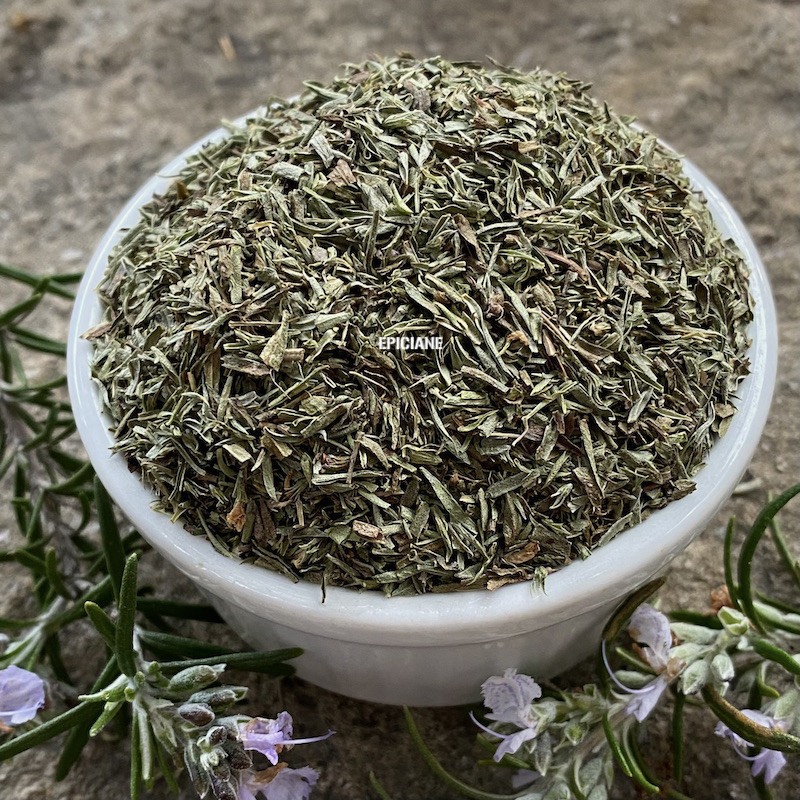
Reference: 021122


It carries the sunny fragrance of the Provençal scrublands where it grows.
It will cheerfully complement grilled meats, sauces, vegetables, and liqueurs, infusing them with its full aroma!
 Delivery
Delivery
Mondial Relay
 Returns
Returns
See conditions
 Payments
Payments
100% secure
Livré en sachet refermable
Uses in Cooking:
This savory, grown in the Provençal scrublands, has been carefully handled to preserve all its gustatory and medicinal qualities. It is one of the iconic herbs in the famous "herbes de Provence" blend, whose unmatched flavor has long been celebrated worldwide.
Since the naturally long and slightly stiff leaves might not be appealing to everyone, this savory has been cut into pieces of about 2 to 4 mm. This way, it blends seamlessly, even for the most sensitive palates.
Savory leaves have been used as a condiment since antiquity, ideal for grilled meats and even fish, sauces, and all types of vegetables. Its flavor is somewhat reminiscent of thyme, making it an excellent companion in various culinary uses.
Savory’s medicinal properties make it an herb that is both pleasurable and healthful—consume it freely! It aids digestion and particularly helps prevent bloating, making it a recommended addition to dishes with beans.
You can also macerate a few sprigs of savory in alcohol with added sugar to create a liqueur that will keep for many years.
Who am I?
Origin: Provence
Scientific name: Satureja montana
Nicknames: "Pèbre d'ai" or "pèbre d'ane" in Provençal (meaning "donkey's pepper"), "poivrette" in French-speaking Switzerland, and also known as: savory, sadrée, St. Julien's herb, and devil's herb.
Both the leaves and flowers are known for their digestive, stimulating, and antiseptic properties. In teas, often with thyme, savory can soothe colds and respiratory infections.
Savory leaves can be harvested year-round, but aromatic phenols are most concentrated after the flowering period in May/June, making summer the best time.
When planted in the garden, savory is known to repel certain insects like mosquitoes and aphids.
This aromatic herb thrives in Mediterranean climates, native to regions including Mediterranean Europe, North Africa, Ukraine, Asia Minor, and the Near East, and is valued for its culinary, medicinal, and aromatic uses.
Savory is a low-growing plant reaching about 20 cm in height, quickly spreading under suitable conditions. The small, narrow, lance-shaped leaves are highly fragrant upon contact and remain evergreen, though they turn red and dry out in prolonged summer droughts, regreening with the first autumn rains.
Savory prefers sunny locations and calcareous, light, well-drained soils.
Its pale pinkish-purple flowers bloom at the end of spring or early summer, forming small clusters at the tips of the terminal leaves.
A Little History:
Once, a variety called "hortensia" was considered a magical aphrodisiac plant. The Latin name of the genus, resembling "satyr," reinforced this association.
Data sheet
Reference: 021122
Reference: pellebuisG8
Reference: kenya
Reference: laurierE
Reference: EPI230204
Reference: 10M6741201
Reference: speculos
Reference: 10M6810601
Reference: poivrevoatsE
Reference: 6L5609803
Reference: selguérande
Reference: 10707402
Reference: paindepices
Reference: anisvertM
Reference: EPI2301013

It carries the sunny fragrance of the Provençal scrublands where it grows.
It will cheerfully complement grilled meats, sauces, vegetables, and liqueurs, infusing them with its full aroma!